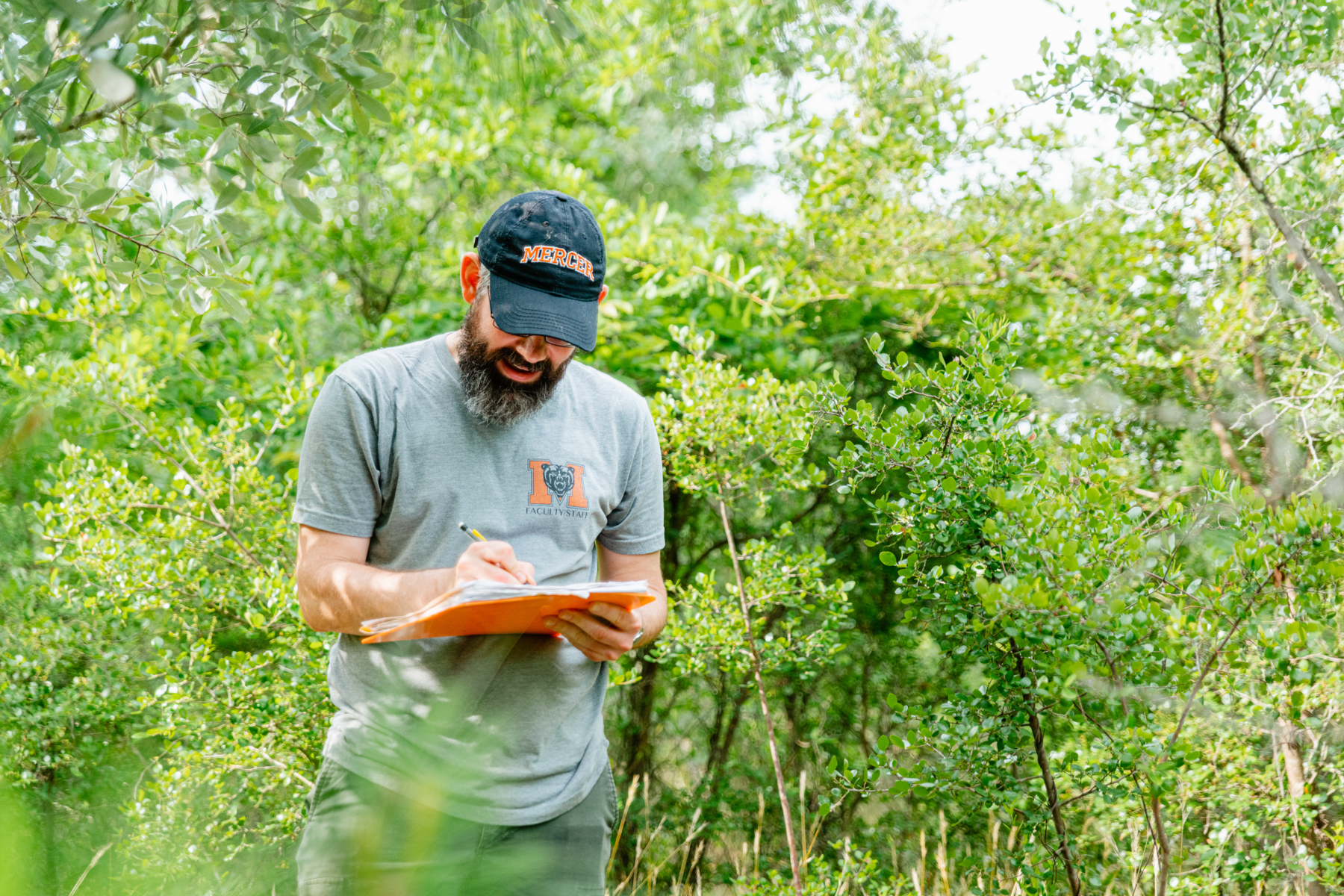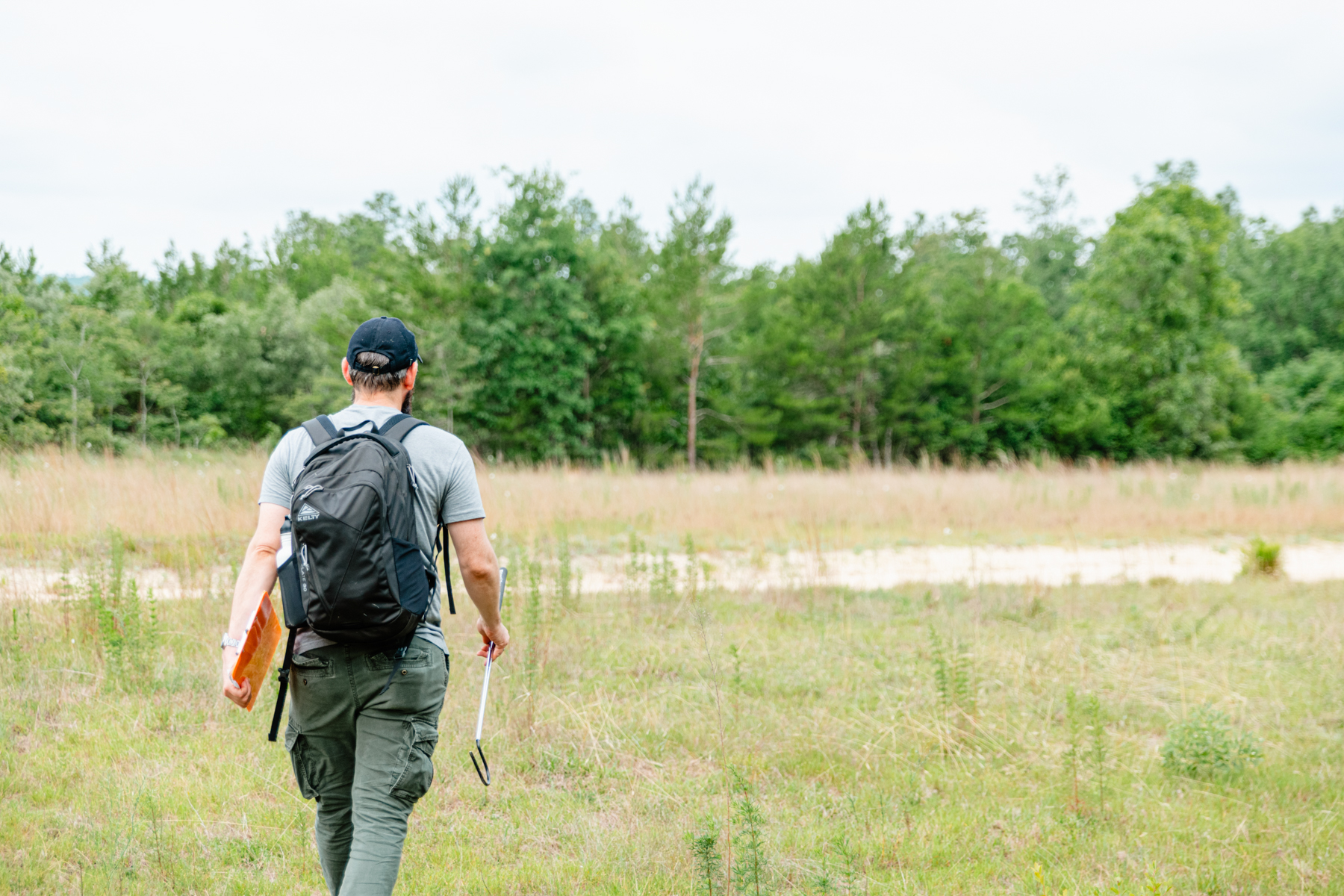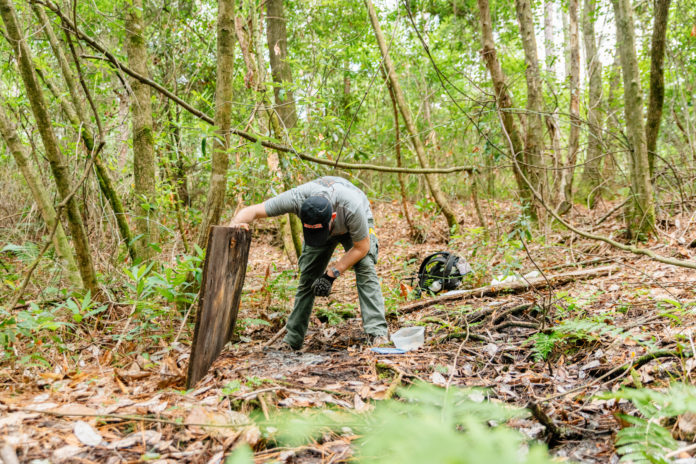
Dr. Barry Stephenson walks nimbly through the woods, stepping over roots and pushing back tree branches. There’s no clear path, but he knows where he’s going.
At least once a week for the past 2 ½ years, Dr. Stephenson, an associate professor of biology in Mercer University’s College of Liberal Arts and Sciences, has come to these 160 or so acres in Crawford County to survey its population of amphibians and reptiles, also known as herpetofauna.
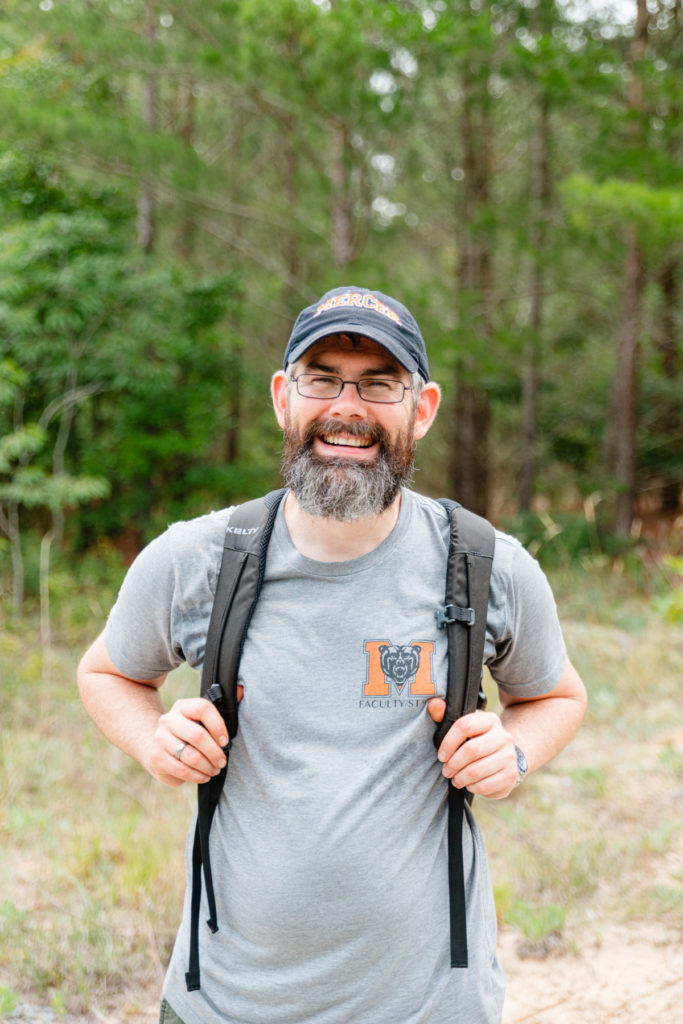
On this muggy June morning, he’s checking pitfall traps that he set the evening before. Rain was supposed to fall overnight, making it more likely the cold-blooded creatures would come to the surface and stumble into one of the buckets.
“You just have to be out here enough, and the conditions have to be right,” he said. “Sometimes it’s just being in the right place at the right time.”
The ground wasn’t as wet as he expected, and he worried the conditions were too dry to find anything besides insects on this trip. But then, when checking the last bucket of the day, Dr. Stephenson uncovered a small scarlet snake — the first of its species found on the property.
The snake’s discovery illustrates “the impressive herp diversity of the site,” he said.
It also gets to the heart of Dr. Stephenson’s research exploring the biodiversity of the Crawford County tract, where over the years he and students in his biology lab have revealed both new populations of species of conservation concern and helped better characterize the regional diversity of herpetofauna.
So far, they’ve identified at least 25 species of amphibians and reptiles on the property.

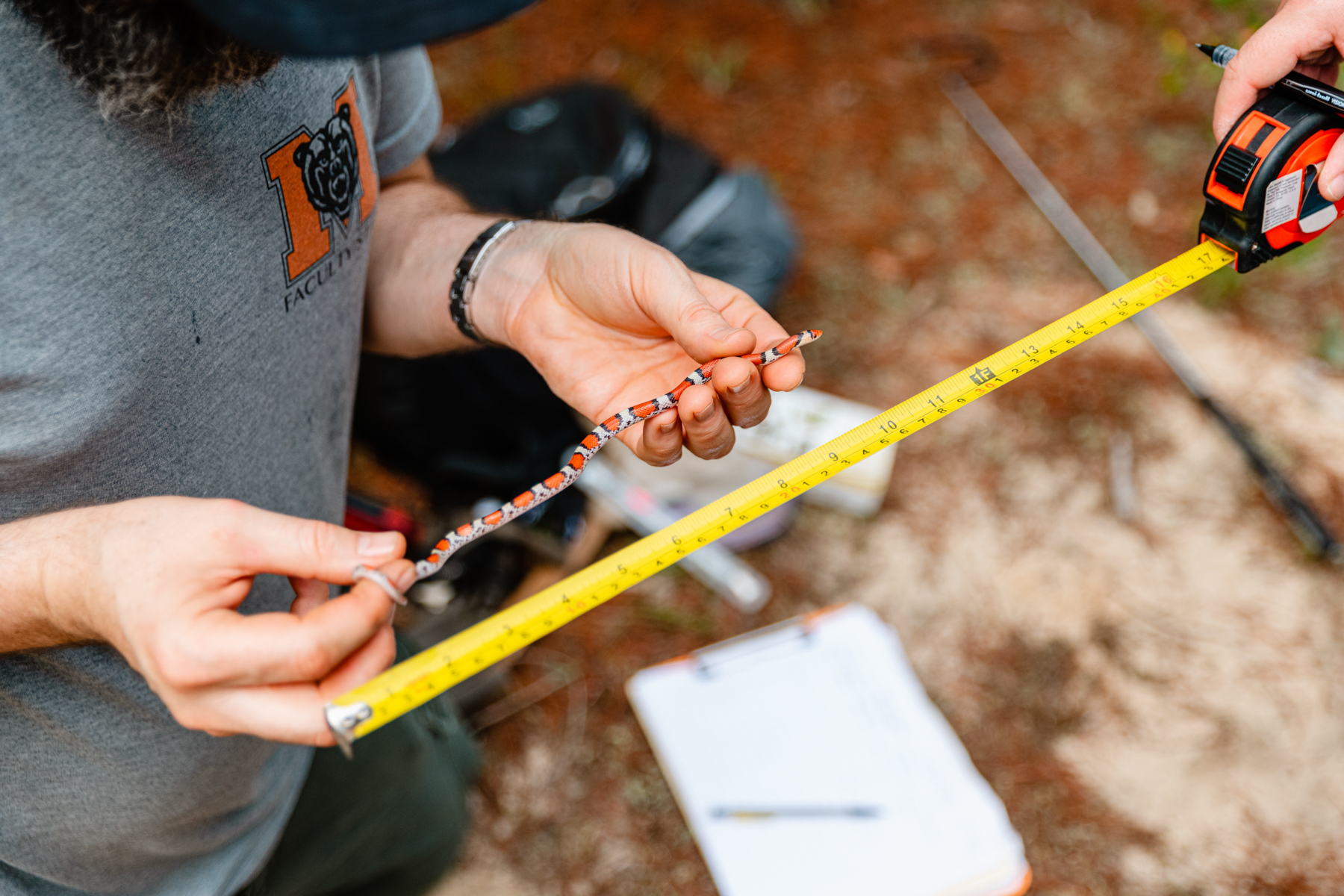
Gopher tortoises and salamanders
Dr. Stephenson started his work in Crawford County in fall 2019, about a year after Mercer purchased the property to provide a place for students in astronomy labs to better view the night sky. His initial survey of the area, located about 30 minutes from campus, made an important discovery.
“It became clear that there were gopher tortoise burrows on the property,” he said. “And that’s a big deal because they’re particularly important components of Southeastern Coastal Plain ecology. They’re rare throughout their current range.”
The only land tortoise native to the Southeast, the gopher tortoise is listed as threatened under the federal Endangered Species Act in Louisiana, Mississippi and Alabama. It is considered a species of conversation concern in the rest of its range, consisting of Florida, South Carolina and Georgia, where it’s protected by state law.
Land use changes and human activities have impacted the gopher tortoise population. The presence of gopher tortoises is meaningful not only because of their rarity but because they contribute to biodiversity, Dr. Stephenson said.
“Where you have gopher tortoises and they’re actively making burrows, they’re creating shelter not just for themselves but for other species, and when gopher tortoises are gone, and you don’t have gopher tortoise burrow replacement, species that are dependent on or use those burrows on a regular basis will often no longer be in an area,” he said.
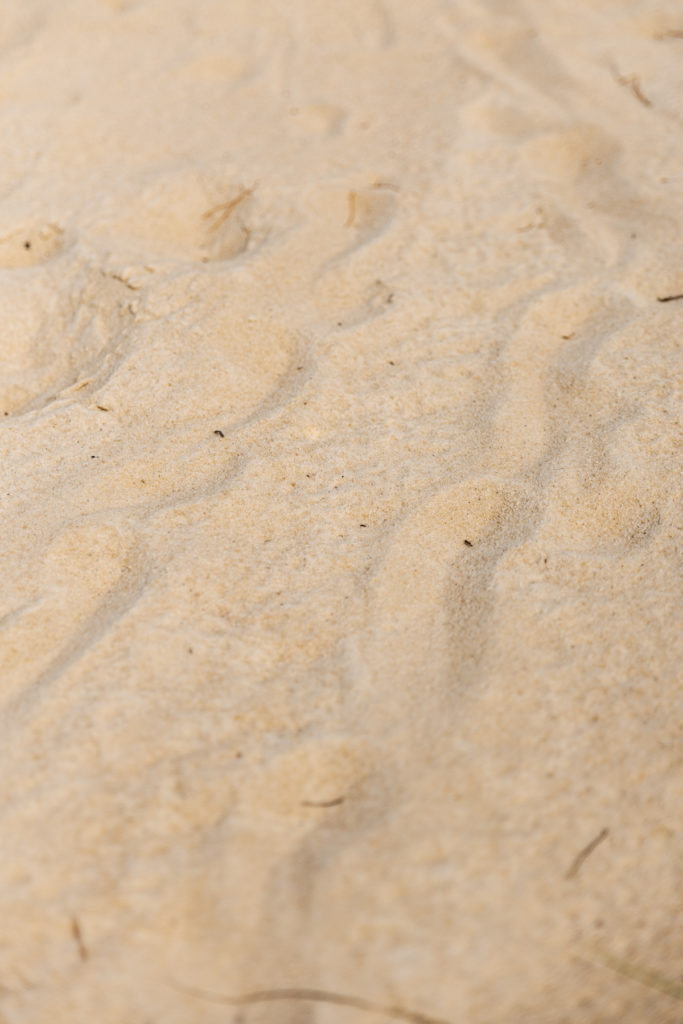


Gopher tortoises, named for their ability to dig like a gopher, are hard to observe because they spend most of their time in burrows underground, only coming out to eat and build new burrows. Cameras have helped Dr. Stephenson and his students document their activity, which is shared with the Georgia Department of Natural Resources.
“The fact that we’re able to get at least some information about the tortoises, in particular, I think is definitely helpful. It’s helpful for understanding their distribution. It’s helpful for understanding something about the population size, perhaps elements of their behavior,” he said. “I don’t expect these things to be particularly different from what folks who have studied populations elsewhere have found, but any of this information is definitely useful from an applied conversation standpoint and a policy one.”
The gopher tortoises are mainly found on the western side of the property, which has a higher elevation and exposed sandy areas that gopher tortoises prefer.
From a large hill on the western side, water flows down the eastern side, which is at a lower elevation. While there are no open ponds or pools on the property, the water does bubble up to the surface, creating a welcoming environment for amphibians, especially salamanders.
“The diversity is quite impressive. I think we’ve found at least six species so far on the property, which is a lot, and it’s to the extent that most of these observations come from a relatively small proportion of the total property area,” Dr. Stephenson said. “And what it tells us, the fact that the diversity is relatively high, is that in general the conditions are good. They’re appropriate for these animals.
“Amphibians in general have been particularly hard hit from a variety of stressors that have emerged over the last 50 or so years. A lot of this has to do with the land use changes that displace and sometimes eliminate amphibian populations, especially when it comes to water, which amphibians are highly dependent on.”
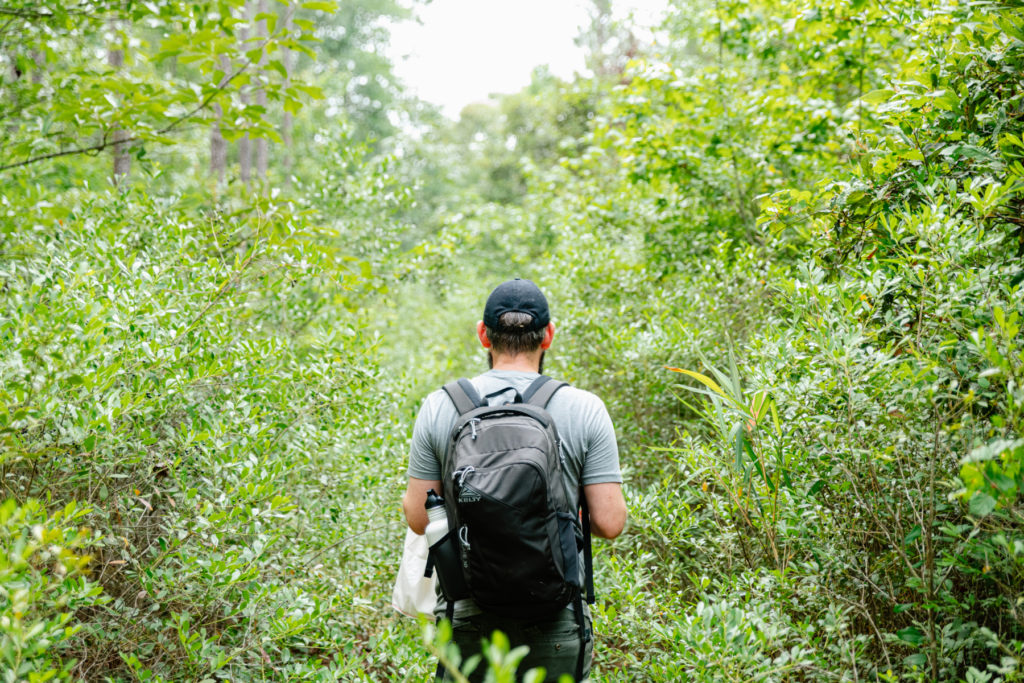
Senior Quin Hricik, a biology major working with Dr. Stephenson, said “dip netting” is a fun and effective way to find salamanders.
“We have these nets, and there’s these mudpuddles. You stick your net in there, and you sift through the mud and debris that you get up, and sometimes there’ll be a salamander in there,” she said.
Hricik, who is graduating with a bachelor’s degree from Mercer in the summer and will pursue a master’s degree in environmental conservation education at New York University in the fall, said the work has taught her a lot about identifying amphibians, as well as field techniques.
Using what she’s learned in the lab, Hricik built a website, georgiafrogs.org, where people can learn best practices for “herping,” the act of searching for amphibians or reptiles. She hopes to add frog calls to the website in the future.
“You should be able to listen to frog calls from around the Central Georgia area that I’ve recorded and help us identify those,” she said. “And so then by helping us identify them, (members of the public are) also learning the different calls themselves.
“So, they’re doing citizen science, they’re helping researchers, but they’re also helping themselves.”
Trap and release
Understanding local and regional reptiles and amphibians is tricky because they’re hard to find. They’re often active when humans are not and spend time underground and in trees — places that are hard for humans to access.
Because reptiles and amphibians don’t generate their own heat, they tend to be more stationary and secretive.
So, after Dr. Stephenson and his students completed an initial walk-through of the Crawford County site, they laid pieces of plywood across the ground on strategic parts of the property. Reptiles and amphibians are attracted to the plywood as shelter.
“You can check under these things on a regular basis and find stuff that way that wouldn’t normally be very easy to find,” he said.
In spring 2020, Dr. Stephenson and his students installed a series of pitfall trap arrays — networks of silt fencing that are partially buried into the ground with three spokes radiating from a central point. At the end of each spoke and at the center, a bucket with a lid is buried.

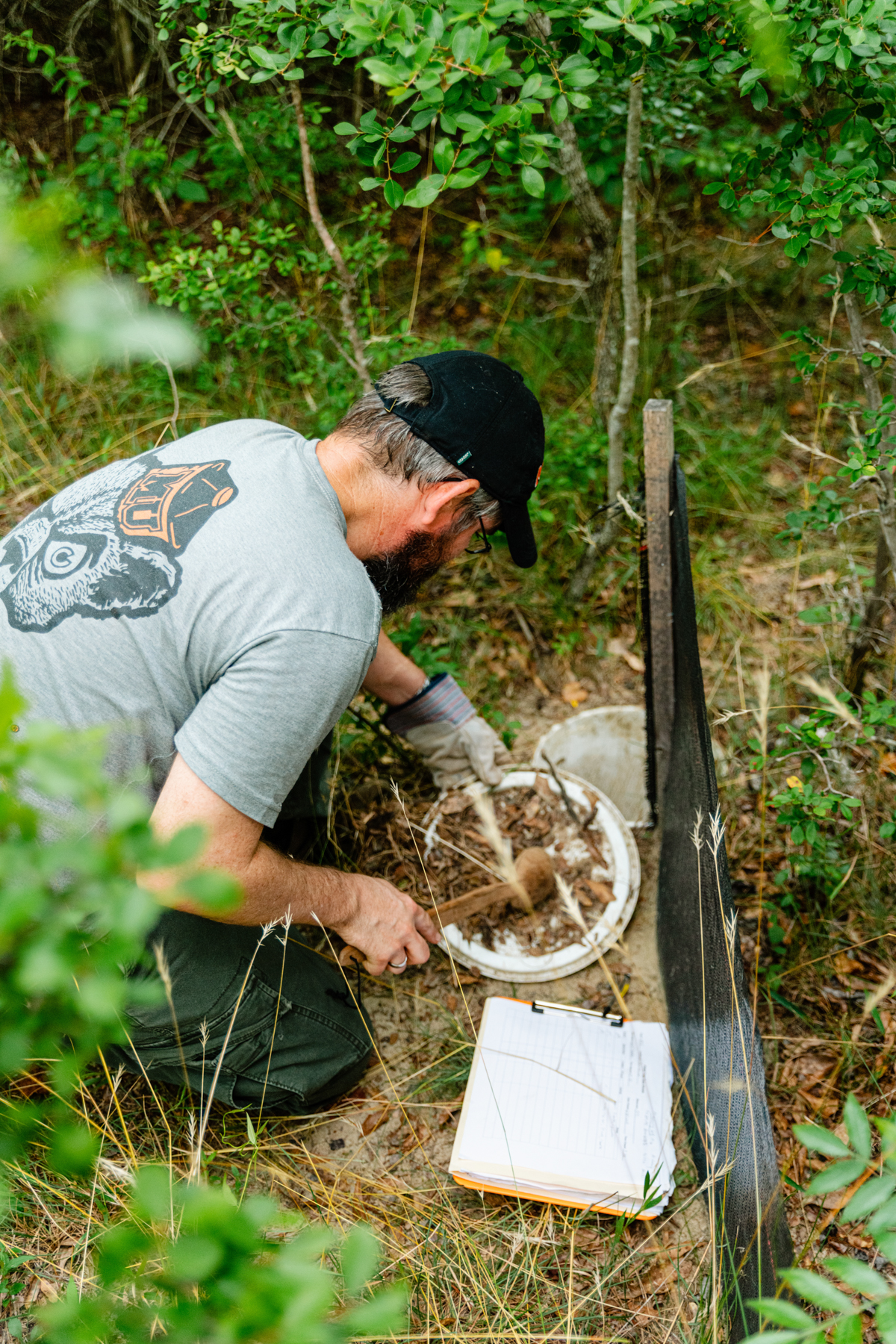
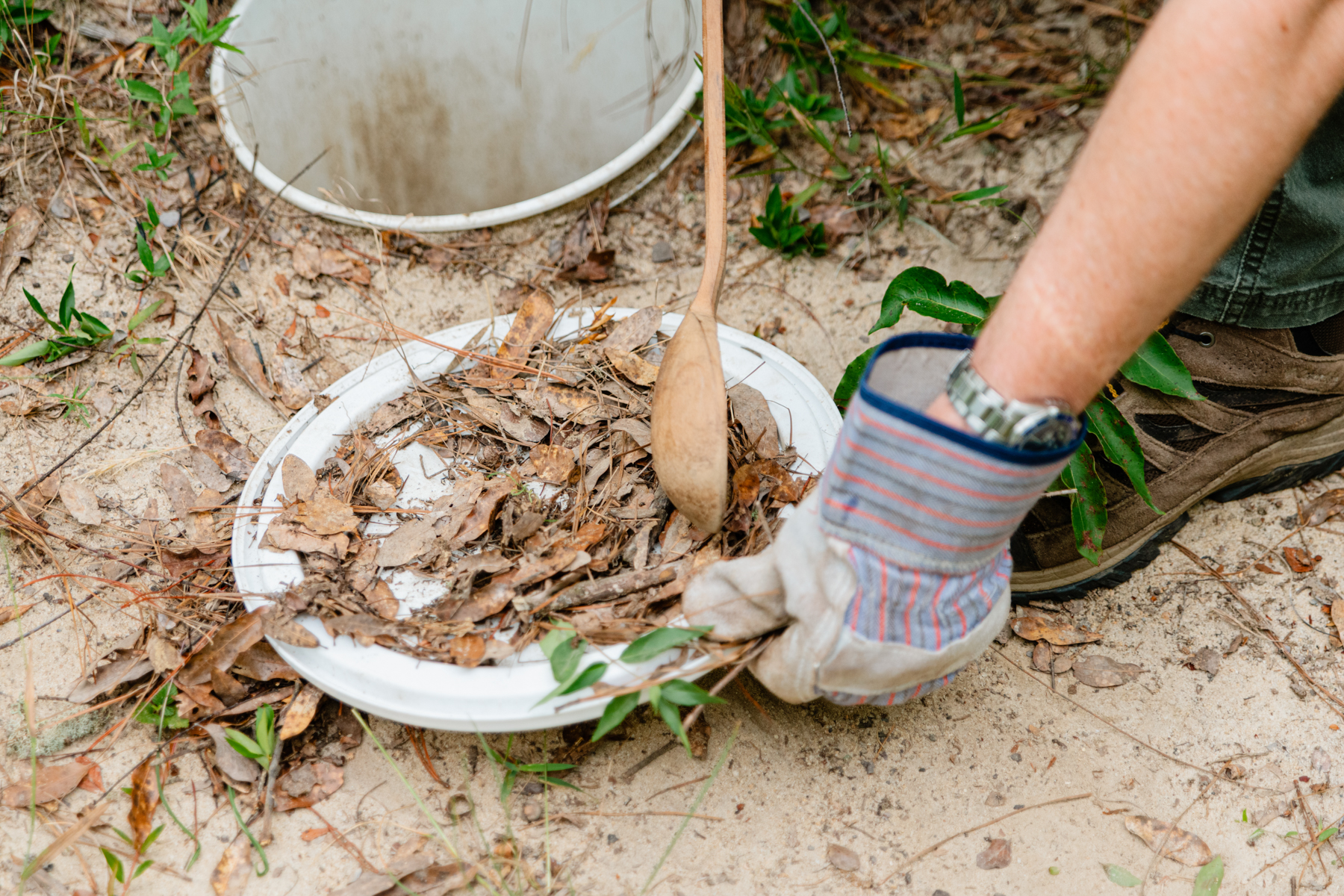
Once or twice a week, depending on the weather, Dr. Stephenson takes the lids off the buckets, tipping each lid over the buckets’ opening with a stick. He adds leaf litter and sand for trapped animals to hide in before they’re removed.
The traps are checked the next day, gingerly with a wooden spoon. The findings are recorded, and the animals are released.
“I love that it’s not just sitting in a lab and that I actually get to get out and see the animals in their natural habitat and also do field work,” Hricik said. “Even if we’re not finding reptiles that day, it’s still fun to go out and hunt for them.”
In the case of the scarlet snake, Dr. Stephenson placed it in a pillowcase-like bag to bring back to campus. He wanted to share the finding with Hricik, who couldn’t be in the field that day, and analyze the snake’s color using a spectrometer.
It was released later that day, Dr. Stephenson said, “a few meters away from the pitfall trap bucket he was found in, promptly digging himself back into the sand that he emerged from.”
